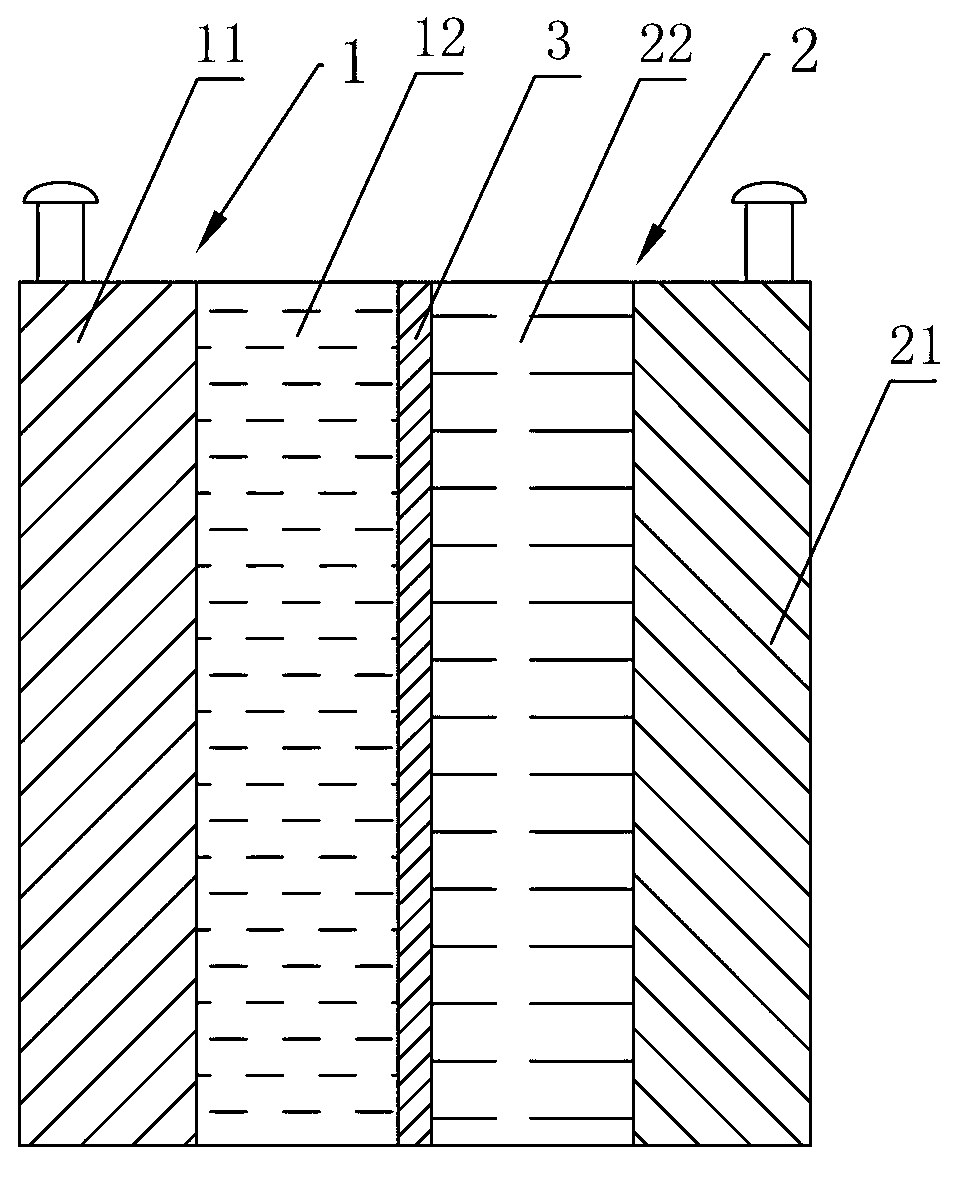Sodium-sulfur electrical storage battery
A technology of storage batteries and sodium-sulfur batteries, applied in secondary batteries, circuits, electrical components, etc., can solve the problems of restricting the commercial scale application of sodium-sulfur batteries, increasing operating costs, high operating temperature, etc., to broaden the commercial The effect of large-scale application range, production cost reduction and operation cost reduction
- Summary
- Abstract
- Description
- Claims
- Application Information
AI Technical Summary
Problems solved by technology
Method used
Image
Examples
Embodiment 1
[0039]Add 50 ml of sodium hydroxide solution with a molar concentration of 10 mol / l into a 150 ml Teflon self-sealing bottle, add 0.20 g of titanium dioxide powder (Degussa P25), and after 7 days of hydrothermal reaction at 160 ° C, the resulting white slurry After pickling and washing with deionized water, the material is poured onto a polyethylene film, baked at 100°C for 10 hours, and then sintered at a temperature above 500°C to remove the polyethylene film to obtain sodium titanate inorganic nanofibers membrane.
Embodiment 2
[0041] Add 50 ml of sodium hydroxide solution with a molar concentration of 10 mol / l into a 150 ml sealed container, add 0.20 g of titanium dioxide powder (Degussa P25), and after 6 days of hydrothermal reaction at 165 ° C, the resulting white slurry is passed through After pickling and washing with deionized water, cover evenly on whatman brand filter paper, first bake at 80°C for 15 hours, and then sinter at 520°C to remove the filter paper to obtain sodium titanate inorganic nanofiber membrane.
Embodiment 3
[0043] The anode of the sodium-sulfur battery is composed of 1.2g of solid metal sodium and 5ml of 1-ethyl-3-methylimidazolium chloride salt, the cathode of the battery is composed of 2g of solid sulfur and 5ml of xylidine, and 1-ethyl-3 -Methylimidazolium chloride salt solution forms the anolyte, and the xylidine solution that has dissolved solid sulfur forms the catholyte, and the anolyte and the catholyte are separated by a sodium ion-conducting membrane; the negative electrode of the battery is an inert metal copper, The positive electrode of the battery is tough and corrosion-resistant graphite; the battery shell is made of polypropylene. The battery is assembled in a nitrogen-filled glove box with controlled humidity. After the battery is assembled and packaged, it is taken out of the glove box, and the battery is charged and discharged using a charging and discharging device. Constantly measured at 50°C, the battery voltage is 1.98V, and the charge and discharge times a...
PUM
| Property | Measurement | Unit |
|---|---|---|
| thickness | aaaaa | aaaaa |
| melting point | aaaaa | aaaaa |
| melting point | aaaaa | aaaaa |
Abstract
Description
Claims
Application Information
 Login to View More
Login to View More - R&D
- Intellectual Property
- Life Sciences
- Materials
- Tech Scout
- Unparalleled Data Quality
- Higher Quality Content
- 60% Fewer Hallucinations
Browse by: Latest US Patents, China's latest patents, Technical Efficacy Thesaurus, Application Domain, Technology Topic, Popular Technical Reports.
© 2025 PatSnap. All rights reserved.Legal|Privacy policy|Modern Slavery Act Transparency Statement|Sitemap|About US| Contact US: help@patsnap.com

